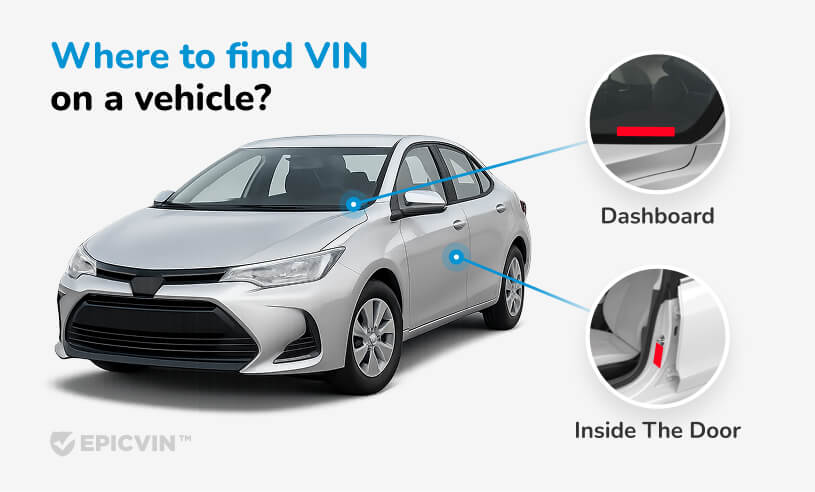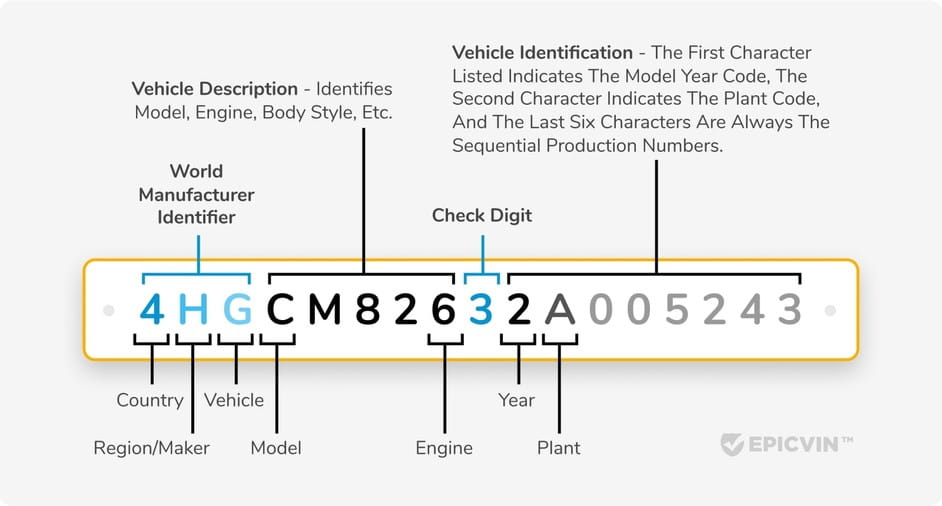
How to Read a VIN Number Like a Pro
From understanding the VIN number breakdown to uncovering a vehicle’s history,...

Free Porsche VIN Decoder! 🚗 See specs, build sheet, recalls basic history—no sign-up. 🛡️✅ Need accidents, mileage, title? Upgrade in one click.
Looking for the VIN?
Here is there you’ll find it:

A Porsche vehicle identification number is a unique 17-digit sequence introduced in 1981. The VIN stands for vehicle identification number, and the VIN describes your specific vehicle. Our VIN decoder reveals technical specifications, model year, engine code, and manufacturing details for shopping decisions.
Getting your Porsche's complete history is simple with our decoder, in addition to the version of published listing information that is present:

Locating your Porsche's vehicle identification number is straightforward. The VIN appears in several standard positions on every Porsche manufactured since 1981.
| Indicator | Real Picture |
|---|---|
| Accident history rate | ≈30% of EpicVIN Porsche reports contain ≥1 damage record (EpicVIN internal analytics, July 2025) |
| Salvage/Rebuilt title | ≈8% of registered Porsche vehicles have branded-title salvage or rebuilt status (EpicVIN + NMVTIS) |
| Average mileage | ≈44,000 miles on 10-year-old Porsche 911 – 2.7x lower than U.S. average |
| Active recall campaigns 2025 | 3 federal recall campaigns affecting 18,585 vehicles: 9,735 Porsche Taycan (OCS/airbag), 8,571 Porsche Macan EV (rear-view camera), 279 Porsche 911 (rear-seat belt bolt) |
| Problem | Affected models · Key symptoms · Average repair cost* |
|---|---|
| 1. IMS bearing failure | 911 (996 & early 997) + Boxster/Cayman 1997-2008 · sudden engine knock, metal in oil · $2-3.5k for preventive retrofit |
| 2. Coolant-pipe leaks ("valley pipes") | Cayenne V8 2004-2006 & early Panamera/Cayenne 958 V8 · coolant puddles, overheating · $2.5-4.5k depending on kit & labor |
| 3. Transfer-case wear/failure | Macan & Cayenne AWD 2014-2018 · jerking 20-40 mph, "AWD disabled" message · $3-6k for reman unit (dealer up to $10k) |

Each character in your Porsche's unique sequence tells a specific aspect of the vehicle's technical specifications. Here's how our VIN decoder interprets the standard format:
Here's how our decoder interprets a sample Porsche VIN WP1AB2A56LLB35439:
| Symbols | Sample | What It Reveals |
|---|---|---|
| 1 | W | Germany as the country of origin |
| 2 | P | Porsche as a manufacturer |
| 3 | 1 | Passenger car vehicle type |
| 4-8 | AB2A5 | Cayenne model line, SUV body style, engine code |
| 9 | 6 | Check digit for validation |
| 10 | L | 2020 model year |
| 11 | L | Leipzig assembly plant |
| 12-17 | B35439 | Individual vehicle serial number |
Year 2017
Make Porsche
Model Macan
Fuel Type Gasoline
Engine
Made in GERMANY
Our VIN decoder extracts comprehensive data from your sequence, revealing factory specifications to ownership history.
Before you put a single dollar down on a used Porsche, drop the VIN into EpicVIN. In seconds, you'll see the original build sheet, prior crash records, IMS-bearing or coolant-pipe recalls, and any branded titles—hard data that protects you from five-figure repair bills.Alex Black, CMO & automotive expert, EpicVIN
You won’t see the Porsche paint code directly in the VIN, but it can be identified through a Porsche paint code by VIN search. A VIN decoder can access factory data that includes the original paint color assigned to the car. If the label is missing or unreadable, this is the most reliable method. The paint code may also be printed inside the front trunk area, on the driver’s side door jamb, or noted in the service booklet. Porsche dealers can also confirm the code from the build sheet using your VIN.
A Porsche’s warranty status isn’t something that can be decoded directly from the VIN, but the VIN is essential for accessing that information through official channels. By using the vehicle’s VIN, you can request warranty details from a certified Porsche dealership or check platforms that explain how to trace warranty coverage using this identifier. For example, how to check a Porsche warranty by VIN through service records and manufacturer databases.
Quick tip: Have your VIN ready before contacting a dealer, it speeds up the process.
Yes. EpicVIN lets you run a basic Porsche VIN decode at no cost—you'll see build data such as model line, body style, motor code, and assembly plant. You pay only if you decide to unlock the extended vehicle-history report.
Enter the VIN in EpicVIN and review the "Recalls" section. We query the NHTSA database in real time. Thus, any active Porsche service campaigns appear with the recall number.
The VIN sits near the top-left corner, above the barcode. Newer Porsche stickers also repeat the VIN along the bottom edge.
EpicVIN's tool reads virtually every Porsche built since 1981. These are the 911, 718 Cayman/Boxster, Panamera, Cayenne, Macan, and Taycan. Our decoder reveals the model year, body style, engine code, and trim for the VIN's modern format.
EpicVIN's decoder aggregates data from multiple authoritative sources (state DMVs, insurers, auto auction lanes, service networks, and other resources). If you're unable to resolve certain word or phrase issues, contact our support team. We protect against online attacks while submitting accurate information, as expressed by human users who have performed triggered searches.
Discover expert tips, news and advice on buying and maintaining used vehicles

From understanding the VIN number breakdown to uncovering a vehicle’s history,...

Finding the best free VIN check can save you from buying a car with hidden pro...

Explore the dangers of title washing, understand how it works, and learn how t...